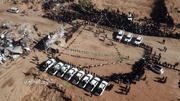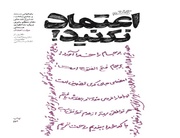The Department of Parasitology and Mycology, School of Public Health, Tehran University of Medical Sciences, has conducted a series of paleoparasitological examinations on the biological remains of the 7,000 year old woman which had been discovered in November 2014 at the bottom of a construction site for Tehran’s Water and Wastewater Company.
Gholamreza Molavai, the head of the research team, said after a whole year conducting parasitological studies on the middle-aged woman from the fifth millennium BC, it was discovered that she had been infected with enterobiasis vermicularis, also known as pinworm infection, the most common type of intestinal worm infection around the world; “this parasitic infection suggests communal living indoors and it can be easily and directly transmitted among family members,” he added.
Molavai maintained that unique and remarkable results in paleoparasitology have been achieved through the collective efforts by Research Institute of Cultural Heritage and Tourism, Iran’s Institute of Archaeology, Faculty of Literature and Humanities of University of Tehran as well as School of Public Health at Tehran University of Medical Sciences.
“The results of the research has been published in Parasite & Vector and is available online for interested people” he said.
Last November, archeology student Mahsa Vahabi accidentally stumbled upon some pottery and a pile of bones at the bottom of a construction site for Tehran’s Water and Wastewater Company. The following urgent archaeological excavation led to the discovery of a skeleton belonging to a woman who lived 7000 years ago.
The remains of the second human skeleton was also unearthed, which is believed to belong to the same time period.
A few months after the discovery, a team led by Mohammadreza Rokni of the Archaeology Research Center reconstructed the skeleton's facial features using "whole parts of the skeleton and the principle of symmetry of human skeleton to reconstruct the missing parts or parts which are unfit for the reconstruction."

According to Rokni, the model was developed drawing upon the supine position of the skeleton to represent its true position when interred; to reconstruct the face the team added a digital version of missing parts mounted on the 3D model; the prepared model was pinpointed in 11 points in face on eyes, nose, ears, chicks, lips, and chin, and then the digital texturing filled these pinpoints to give a clear image of the face.
The remains of the 7-millennia-old woman and other discovered pieces are on display at the National Museum of Iran in Tehran.
MS/3039939

























Your Comment